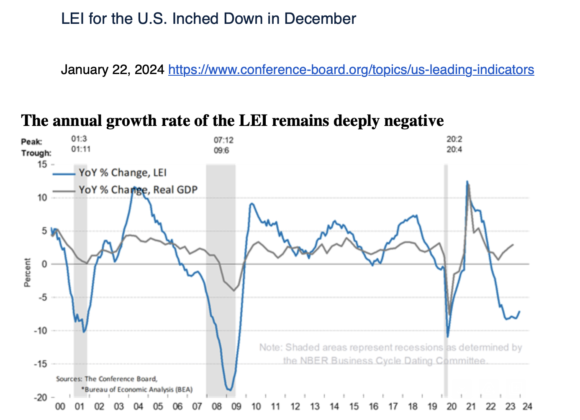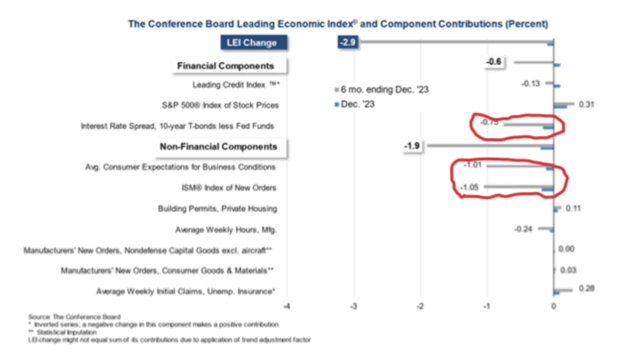Are The LEI Right?

Image Source: Pexels
Looks like a pretty cyclical measurement with the only thing changing is the size of the swings?
“Davidson” submits:
The Conference Board reported the Leading Economic Indicators Index (LEI) as strongly predicting recession. Many take this indicator as gospel. One financial news outlet indicated this economic measure has not been wrong in 65yrs:
In my opinion the LEI is not terribly useful. It is worth looking the component values of the LEI to understand why it does not reflect rising employment, rising real personal income, rising real retail sales and other hard count indicators of economic activity. Extracted from the latest report that is available online are two charts, “The Annual growth rate…” and “…Component Contributions (Percent)”.


The LEI conflates hard data measures Building Permits, Avg Weekly Hrs, a couple of Manufacturers New Orders series and Initial Unemployment Ins Claims with the very negative Yield Curve (10yr Treas minus Fed Funds) and a couple of very negative ISM (Purchasing Managers Survey) reports. The record yield curve inversion does not reflect the speculative juices of investors this time as has been its historical moniker but is now a purposeful hedge by very large pools of capital seeking protection. Retail investors normally push T-Bill rates to cycle lows with record levels in US Retail Money Funds as seen today. But, this signal indicating a high current level of pessimism by rushing to T-Bill-safety has been thwarted by, what I believe, is a high level of T-Bill shorting vs buying of 5yr-10yr Treasuries. This hedge is an institutional bet on falling long-term rates. It has skewed one of the psychological indicators “soft measures” in the LEI into excessively bearish territory. The other issue are the deeply negative ISM indicators which are also dependent on market psychology taking signals from the yield curve inversion making them part of an exaggerated signal. It is counting the same signal a couple of times over. Market psychology is often conflated for economic fundamentals. It calls for recession many times more than recessions actually occur. Market psychology indicators are virtually useless. I placed RED CIRCLES around the psychology-based “soft-measures”.
Although every negative story has its impact, it is the “hard measures”, especially the Delinquency Rates at specific levels, which matter most in understanding economic activity and the likely impact on equity prices. Currently, since “hard measures” are decently positive while “soft measures’ are deeply negative, investment opportunity remains in undervalued issues.
More By This Author:
Real Income HigherPessimism Has A Hair-Trigger, Optimism Not So Much
Real Personal Income Revised Higher
Disclaimer: The information in this blog post represents my own opinions and does not contain a recommendation for any particular security or investment. I or my affiliates may hold positions or ...
more


